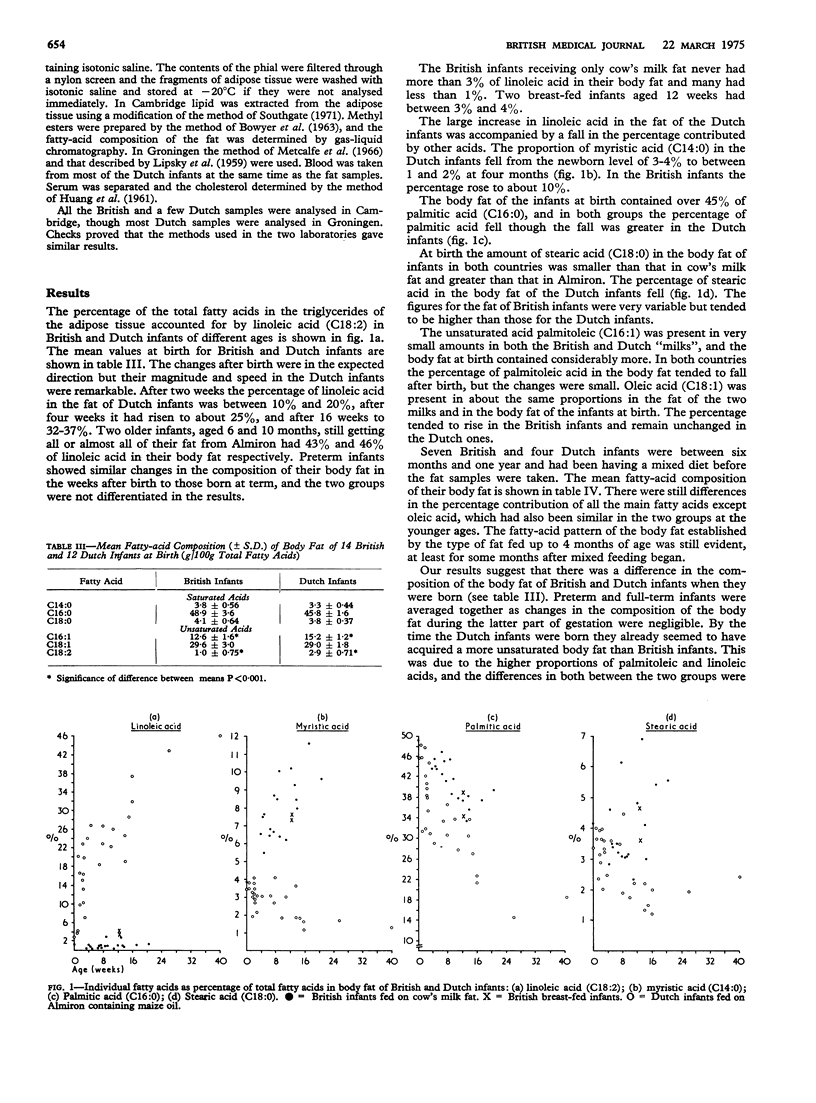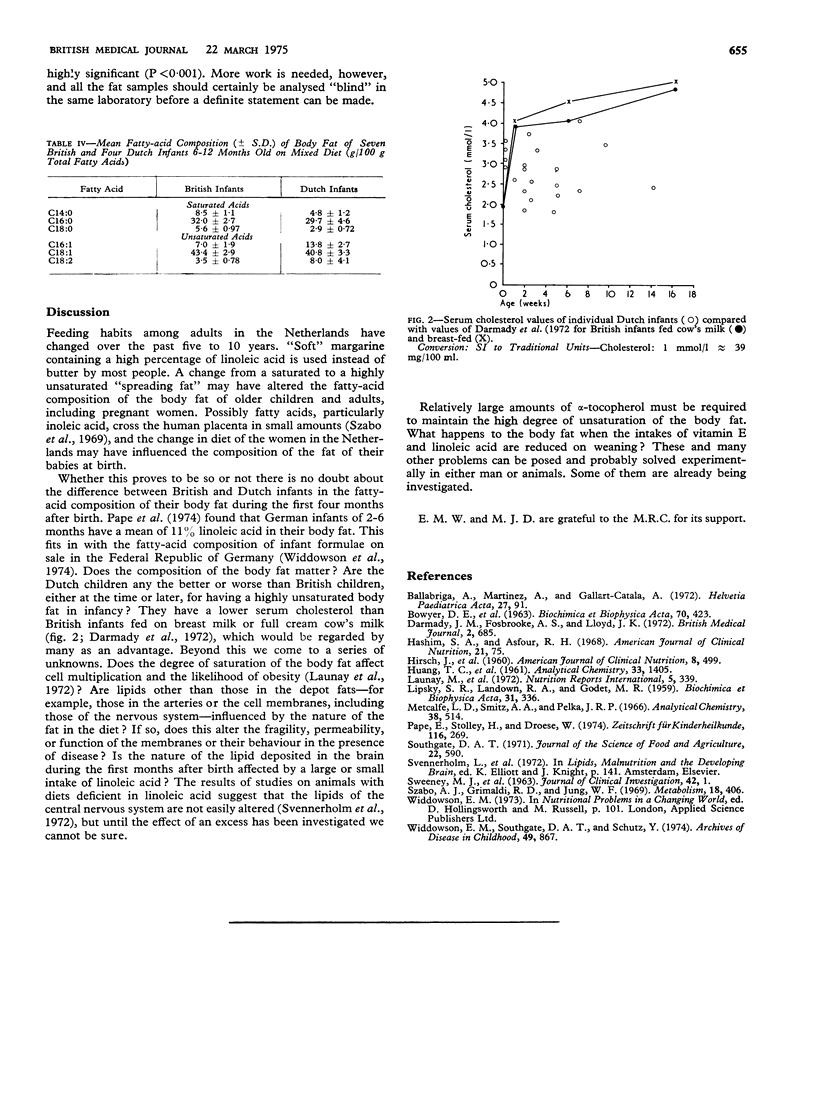Abstract
The fatty acids in the body fat of 41 British and 37 Dutch infants between birth and 1 year were determined. At birth linoleic acid contributed 1-3% of the total fatty acids of the body fat in infants in both countries. By one month its proportion in the fat of the Dutch infants was about 25% and by four months 32-37%; in the fat of the British infants it was never more than 3%. In the Dutch infants this large increase in the linoleic acid percentage was accompanied by a fall in the percentage contribution of others, particularly the saturated acids myristic, palmitic, and stearic. Infants born preterm showed changes in their fat after birth similar to those in fullterm infants. The difference between the composition of the fat of the infants in the two countries is attributed to the nature of the fat in the milk they received. Until recently most British infants who are not breast-fed have been given milks based on cow's milk with only minor modifications. For the past 10 years many Dutch infants have been given a milk in which all the cow's milk fat has been replaced by maize oil. Dutch infants also had a lower concentration of cholesterol in their serum than British infants, which was not unexpected. The results show that the triglycerides in the adipose tissue are profoundly influenced by the nature of the fat in the diet.
Full text
PDF


Selected References
These references are in PubMed. This may not be the complete list of references from this article.
- BOWYER D. E., LEAT W. M., HOWARD A. N., GRESHAM G. A. THE DETERMINATION OF THE FATTY ACID COMPOSITION OF SERUM LIPIDS SEPARATED BY THIN-LAYER CHROMATOGRAPHY; AND A COMPARISON WITH COLUMN CHROMATOGRAPHY. Biochim Biophys Acta. 1963 Aug 27;70:423–431. doi: 10.1016/0006-3002(63)90772-8. [DOI] [PubMed] [Google Scholar]
- Ballabriga A., Martinez A., Gallart-Catala A. Composition of subcutaneous fat depot in prematures in relationship with fat intake. Helv Paediatr Acta. 1972 Apr;21(1):91–98. [PubMed] [Google Scholar]
- Darmady J. M., Fosbrooke A. S., Lloyd J. K. Prospective study of serum cholesterol levels during first year of life. Br Med J. 1972 Jun 17;2(5815):685–688. doi: 10.1136/bmj.2.5815.685. [DOI] [PMC free article] [PubMed] [Google Scholar]
- HIRSCH J., FARQUHAR J. W., AHRENS E. H., Jr, PETERSON M. L., STOFFEL W. Studies of adipose tissue in man. A microtechnic for sampling and analysis. Am J Clin Nutr. 1960 Jul-Aug;8:499–511. doi: 10.1093/ajcn/8.4.499. [DOI] [PubMed] [Google Scholar]
- LIPSKY S. R., LANDOWNE R. A., GODET M. R. The effects of varying the chemical composition of the stationary liquid on the resolution of the long chain saturated and unsaturated fatty acid esters by gas-liquid chromatography. Biochim Biophys Acta. 1959 Feb;31(2):336–347. doi: 10.1016/0006-3002(59)90006-x. [DOI] [PubMed] [Google Scholar]
- Pape E., Stolley H., Droese W. Lipid content and fatty acid pattern in the subcutaneous adipose tissue during childhood--a function of age and nutrition. Z Kinderheilkd. 1974;116(4):269–279. doi: 10.1007/BF00436952. [DOI] [PubMed] [Google Scholar]
- Southgate D. A. A procedure for the measurement of fats in foods. J Sci Food Agric. 1971 Nov;22(11):590–591. doi: 10.1002/jsfa.2740221108. [DOI] [PubMed] [Google Scholar]
- Szabo A. J., Grimaldi R. D., Jung W. F. Palmitate transport across perfused human placenta. Metabolism. 1969 May;18(5):406–415. doi: 10.1016/0026-0495(69)90069-9. [DOI] [PubMed] [Google Scholar]
- Widdowson E. M., Southgate D. A., Schutz Y. Comparison of dried milk preparations for babies on sale in 7 European countries. I. Protein, fat, carbohydrate, and inorganic constituents. Arch Dis Child. 1974 Nov;49(11):867–873. doi: 10.1136/adc.49.11.867. [DOI] [PMC free article] [PubMed] [Google Scholar]


